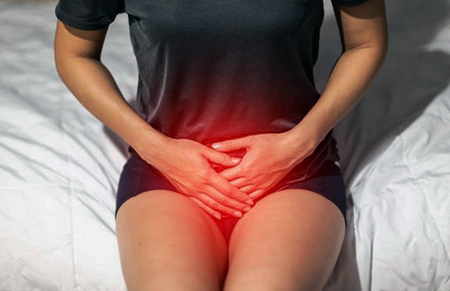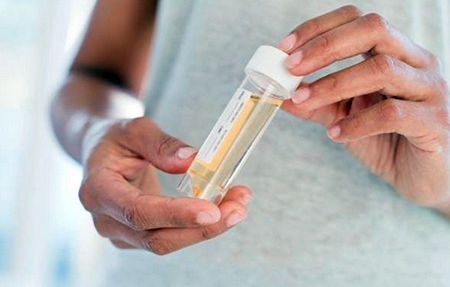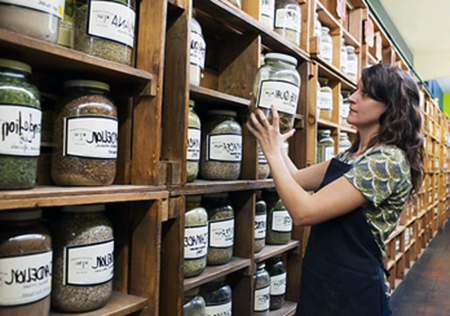Pyelonephritis – symptoms, causes, risks, treatment


In the group of infectious and inflammatory diseases of the excretory system, renal pyelonephritis occurs equally often in adults and children. Bacterial infection affects all structural parts: pelvis, calyx, and parenchyma. Pathology occurs in an acute or chronic form.
Pyelonephritis – short information
Pyelonephritis is insidious in its secrecy and ability to disguise itself as a cold, cystitis, gastritis, sciatica. At a young age, women are more likely to get sick, but with age, the ratio shifts towards men due to the manifestation of age-related problems with the prostate gland. According to statistics, renal pyelonephritis is diagnosed in 20% of the population.
Symptoms and signs of pyelonephritis

The disease is characterized by an acute onset with severe malaise. For this reason, the general condition of the patient resembles a cold. Further pyelonephritis symptoms can vary, depending on the form of the disease. The list contains:
- High temperature up to 38-40 C;
- Pain when urinating;
- Pain in the lumbar region;
- Increased sweating;
- Thirst;
- Nausea and vomiting;
- Trembling and chills.
One of the characteristic signs is urine with pyelonephritis with a pungent odor due to the development of infection. The patient's condition may also worsen with belching, muscle weakness and the appearance of edema. The skin against the background of intoxication of the body is pale.
Causes of the disease

The infection can enter through the urethra even if the hygiene rules are followed. In this aspect, pyelonephritis in women occurs 6 times more often than in men. This is due to the anatomical features - a short and wide urethra. Rarely, a single bacterium becomes the causative agent. Most often, a number of pathogens (staphylococcus, Escherichia coli, Proteus, Enterococcus, Klebsiella) are found in the tests.
The following pathological conditions can also become the reasons for the development of the disease:
- A history of urolithiasis (kidney stones);
- Tumors in the genitourinary system;
- Bowel disease;
- Irregular outflow of urine;
- Weakened immunity;
- Diabetes;
- Prostate adenoma.
Bacterial infection routes
Pyelonephritis occurs in women in some cases due to insufficient hygiene of the genitals. The state of urinary retention is also dangerous, which creates a favorable environment for the development of pathogenic microflora. Similarly, impaired blood flow in the kidney has a deleterious effect. The most common is the ascending route of infection - from the urethra, bladder and higher towards the kidneys.
Risk factors

The risk that acute pyelonephritis becomes chronic is high enough. This can happen with the wrong diagnosis and wrong treatment. Children under 7 years of age, women of any age, and elderly men over the age of 55 are constantly at risk of the disease. For the occurrence of the disease, several factors must coincide. One of them is the presence of systemic diseases. Any infectious foci in the body also increase the risk of becoming a patient with a diagnosis of acute pyelonephritis.
Cystitis is often a precursor. In some cases, pyelonephritis may develop during pregnancy, as the kidneys are under increased stress. This is a dangerous condition that affects 1 in every 10 women.
Risk factors can also be:
- Congenital anomalies of organs (urethra, kidneys, bladder);
- Operations in the area of the urinary system;
- Insertion of a catheter into the bladder;
- Spinal cord injury;
- Prolapse of the uterus;
- AIDS.
Complications of the disease

A number of complications that can occur in patients of any age and gender are as follows:
- Renal failure;
- Blood poisoning (sepsis);
- Purulent kidney damage (carbuncle);
- Emphysematous pyelonephritis;
- Hypertensive attacks;
- Scarring of the kidney;
- Xanthogranulomatous of the kidney.
When to see a doctor?
Pyelonephritis symptoms are similar to other pathological conditions, which complicates its diagnosis. Pain in the kidney area is one of the manifestations that should alert and become a reason for contacting a doctor. It is necessary to be examined both in acute conditions and with a protracted course of the disease.
Chronic pyelonephritis is well disguised as prolonged cold or gynecological diseases. It is also necessary to consult a doctor if you have problems with urine outflow. The unexplained reason for this fact is a constant focus for the emergence of a bacterial infection. Its beginning may be indicated by a sharp and unpleasant smell of urine.
Pyelonephritis symptoms may be aggressive and treatment in such cases should begin immediately. This will help avoid structural changes in the kidneys. The appearance of blood inclusions, an increase in the level of protein in the urine analysis, renal colic are also reasons for visiting a urologist.
Preparing the patient for a visit to the doctor

A visit to a doctor is preceded by preparation in accordance with a number of rules. 12 hours before the visit, you must exclude any meals, including alcohol consumption and smoking. The day before the examination, it is advised to lower the consumption of fluid to minimize the burden on the kidneys. It is advisable not to take any medication. If there is an urgent need for this, then it is imperative to inform the doctor about this before the appointment.
Diagnostics of the pyelonephritis
At the reception, the doctor collects data on the patient's condition, conducts a general examination. Tests for pyelonephritis help confirm the diagnosis. The appointment is made by the doctor. Urine and blood tests (general clinical) are the first on the list.
Additional instrumental studies are required to clarify the current state of the patient's excretory system and internal organs: computed tomography, radiography. They make it possible to detect chronic pyelonephritis even several years after the disease. Diagnostic tests include CT, MRI, ultrasound, X-ray, scintigraphy, angiography. You don’t need to undergo all of them, your doctor will chose the needed method.
Kidney disease treatment

Pyelonephritis treatment requires a complex approach. It implies the use of medication and physiotherapy. The treatment tactics are selected individually by the urologist. Antibiotics are prescribed for pyelonephritis in the acute stage to suppress bacterial infection. The most commonly prescribed antibiotics are Cefaclor, cefuroxime, cefamandole, and others.
In the first place is the need to restore the outflow of urine and search for the cause of urodynamic disorders. Also the diet for pyelonephritis and bed rest is crucial. 3-5 days after the start of complex therapy, the degree of manifestation of symptoms decreases.
The chronic stage of the disease is not completely cured due to structural changes in the kidneys. Remission is periodically replaced by exacerbations, which are treated according to the principle of acute pyelonephritis. During remission, it is imperative to follow a diet and do not forget about supportive therapy.
Home remedies

Traditional medicine does not stand aside, offering various herbal remedies. There is an opinion that birch sap is a good remedy. It is advised to drink 200 ml daily in the morning on an empty stomach. The juice should be natural, not from a store can. Caution: this method is contraindicated for people with urolithiasis (kidney stones).
In the watermelon season, you can save yourself from illness with these sweet large berries. They perfectly remove excess fluid from the body, improve kidney function. On a watermelon day of the diet, liquids other than water should not be consumed. “Unloading” in this way can be carried out after the end of the exacerbation period.
Kidney collection of sage, chamomile and calendula, birch leaves and lingonberry has bactericidal properties, allowing you to suppress the development of infection and inflammation. Bearberry broth has a good effect. It is enough to pour boiling water over 1 tbsp. herbs, insist and take three times a day before meals, 2 tbsp.
Please note that any prescriptions and advice of traditional medicine must be agreed with your doctor.
Myths and dangerous misconceptions in the treatment of pyelonephritis
The biggest misconception is that any kidney disease must be accompanied by severe pain. This is one of the possible symptoms, but it may not always be pronounced. The latent course of the disease (chronic and asymptomatic) can be detected by chance on an ultrasound or CT scan during examination for some other reason. Pressure surges, fever, malaise, and general weakness are rarely taken seriously enough to make an appointment with an urologist.
As beer has a water pill effect, some people think that it can be beneficial for pyelonephritis. This is another big misconception. Beer doesn't do any good for your kidneys. On the contrary, alcohol requires kidneys to work more intensively to clear the blood and if they are already sick, this can promote the deterioration of their function.
Prevention is the best protection

Treatment of pyelonephritis in women is often associated with gynecological diseases, which can occur due to hypothermia. Compliance with physical activity and diet plays an important role in prophylaxis of pyelonephritis both in men and women. If the disease is in a chronic form, it is necessary to prevent an exacerbation of pyelonephritis:
- Compliance with the rules of hygiene;
- Control of secondary infectious foci (caries, tonsillitis);
- Regular preventive examinations;
- Regular consumption of fresh vegetables and fruits;
- Regular urine tests (your doctor will tell you how often you should do them).
Post by: Natalie Keller, M.D. General Health Centre, Minneapolis, Minnesota
(Updated at Apr 14 / 2024)
Ceclor articles:
Some of the trademarks used in this Web Site appear for identification purposes only.
All orders are reviewed by a licensed physician and pharmacist before being dispensed and shipped.
The statements contained herein are not intended to diagnose, treat, cure or prevent disease. The statements are for informational purposes only and is it not meant to replace the services or recommendations of a physician or qualified health care practitioner. If you have questions about the drugs you are taking, check with your doctor, nurse, or pharmacist.